Flame Resistant Shirts
Showing 1–9 of 40 results
-
Sale!
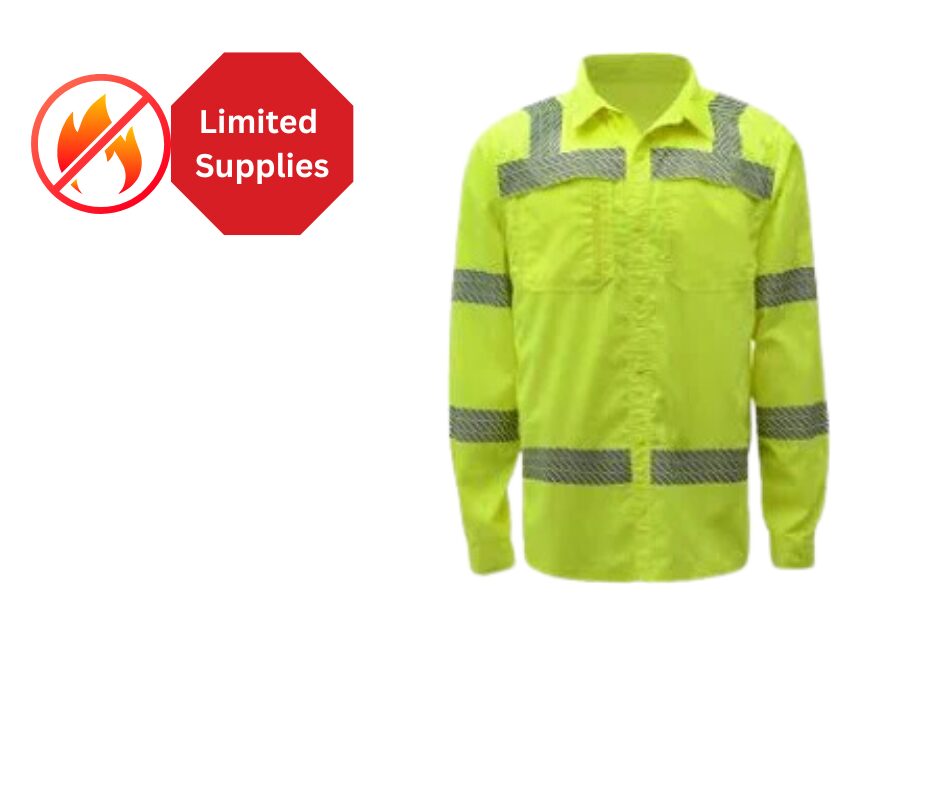 Details
Details*(FR) – HiVis Button Down Lightweight Shirt Class 3, Flame Resistant
Original price was: $45.00.$35.00Current price is: $35.00. Buy Now -
Sale!
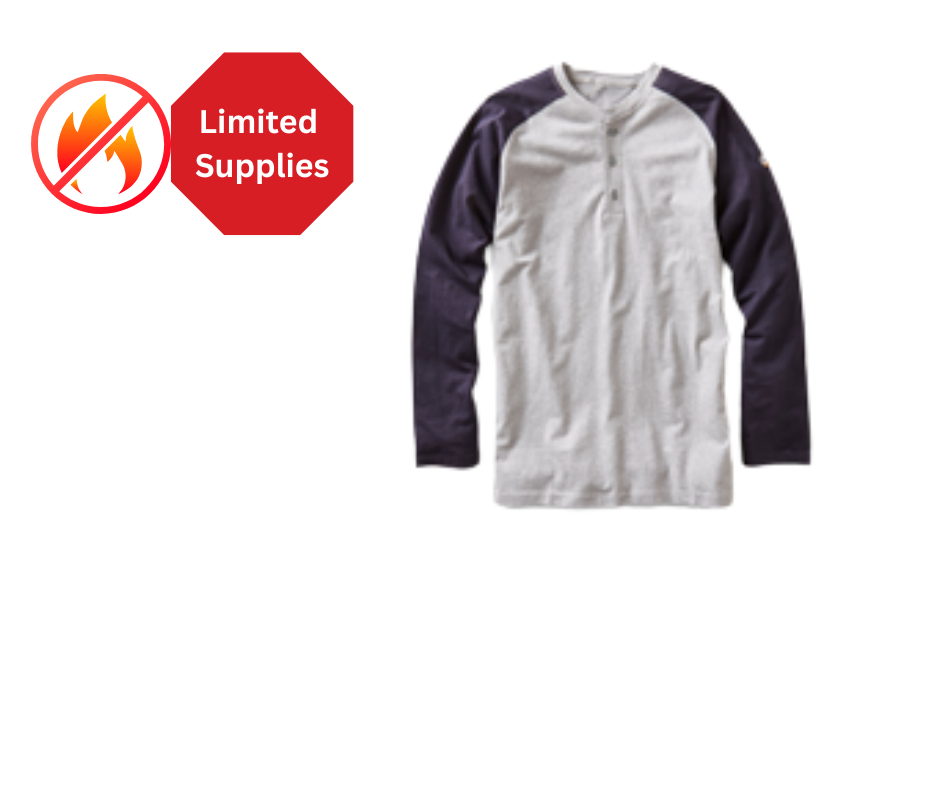 Details
Details*(FR) – Rasco 2 Tone Henley Navy/Gray Flame Resistant Long Sleeve
Original price was: $47.00.$41.00Current price is: $41.00. Buy Now -
Sale!
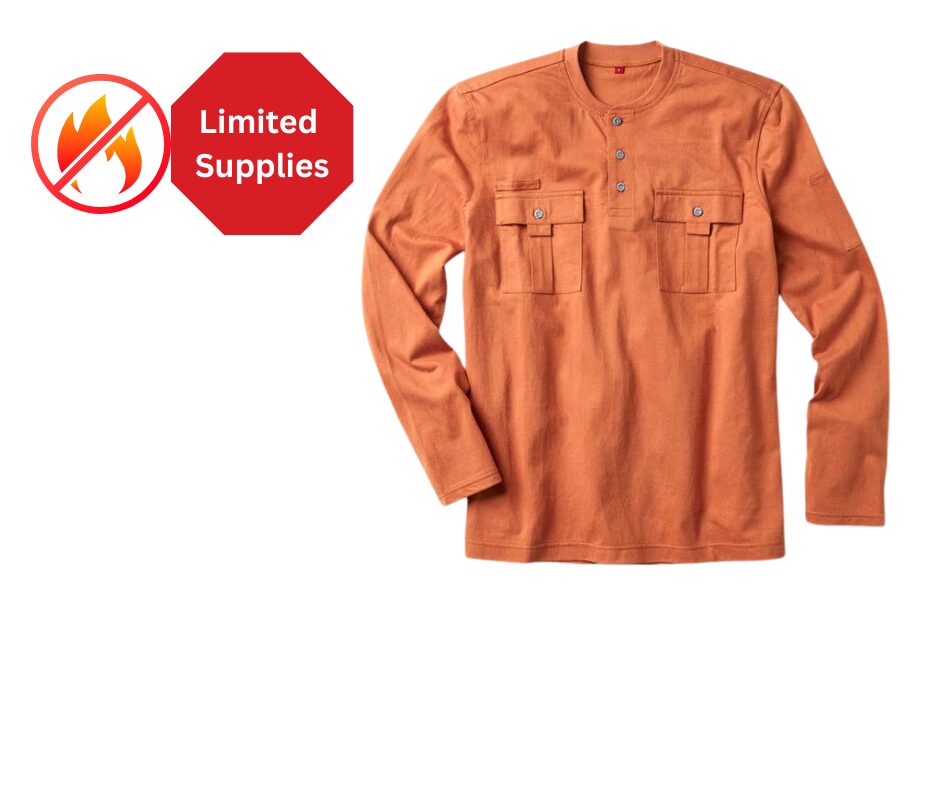 Details
Details*(FR) – Rasco Burnt Orange Lightweight Henley Flame Resistant Shirt
Original price was: $57.00.$47.00Current price is: $47.00. Buy Now -
Sale!
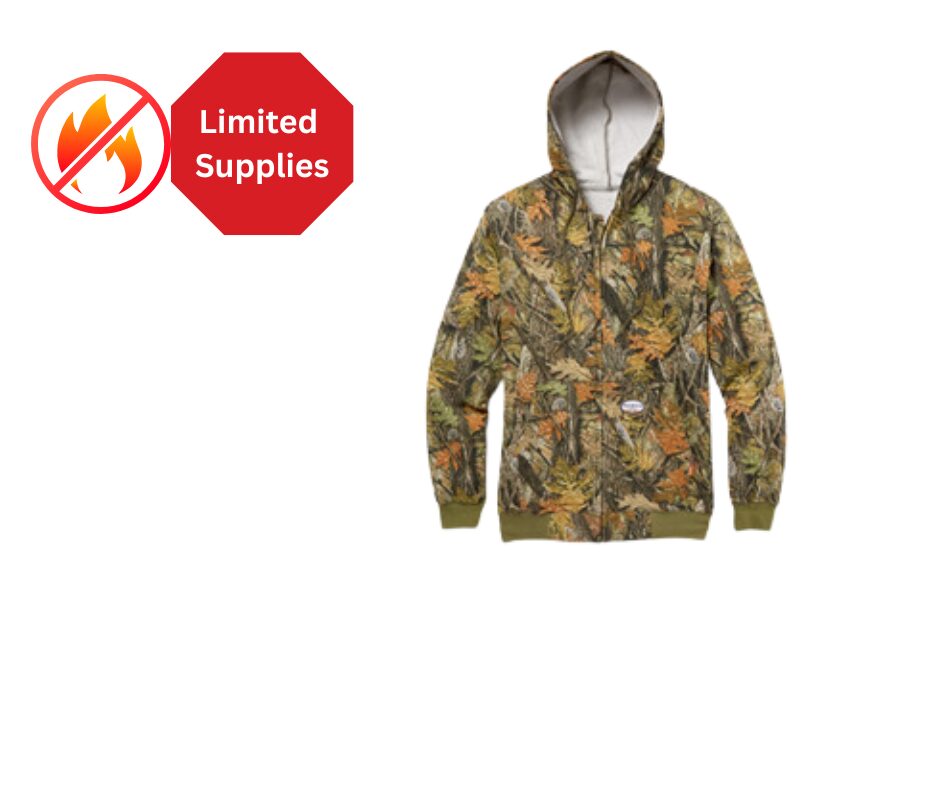 Details
Details*(FR) – Rasco Camo Zip Up Hooded Sweatshirt Flame Resistant
Original price was: $74.00.$64.00Current price is: $64.00. Buy Now -
Sale!
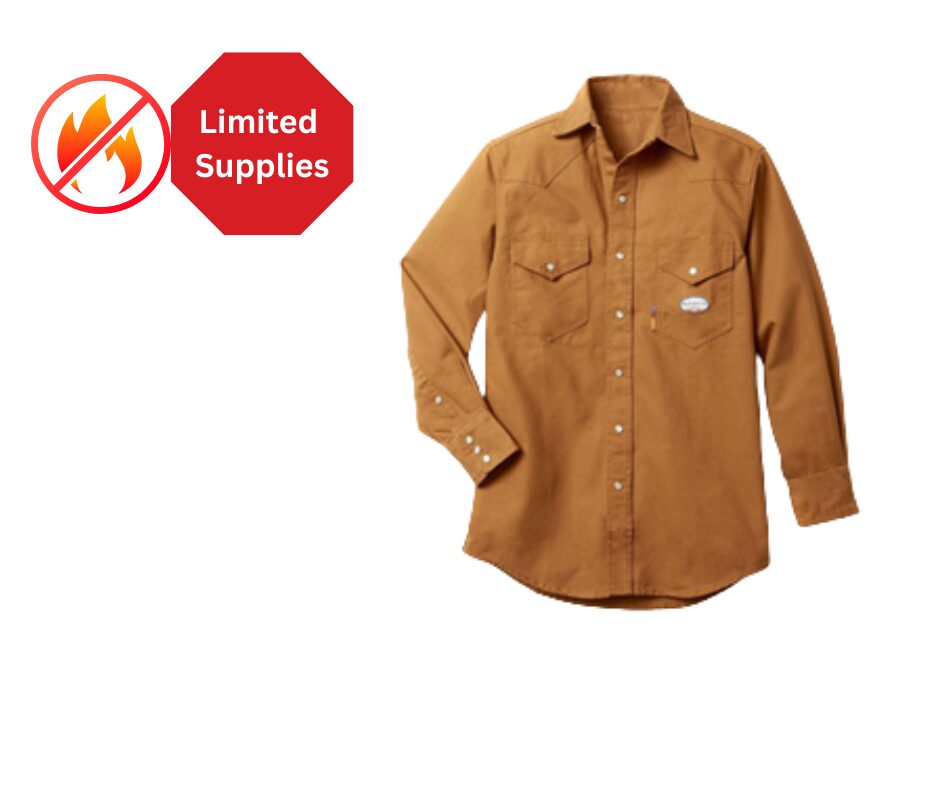 Details
Details*(FR) – Rasco Flame Resistant Brown Duck Work Shirt
Original price was: $47.00.$41.00Current price is: $41.00. Buy Now -
Sale!
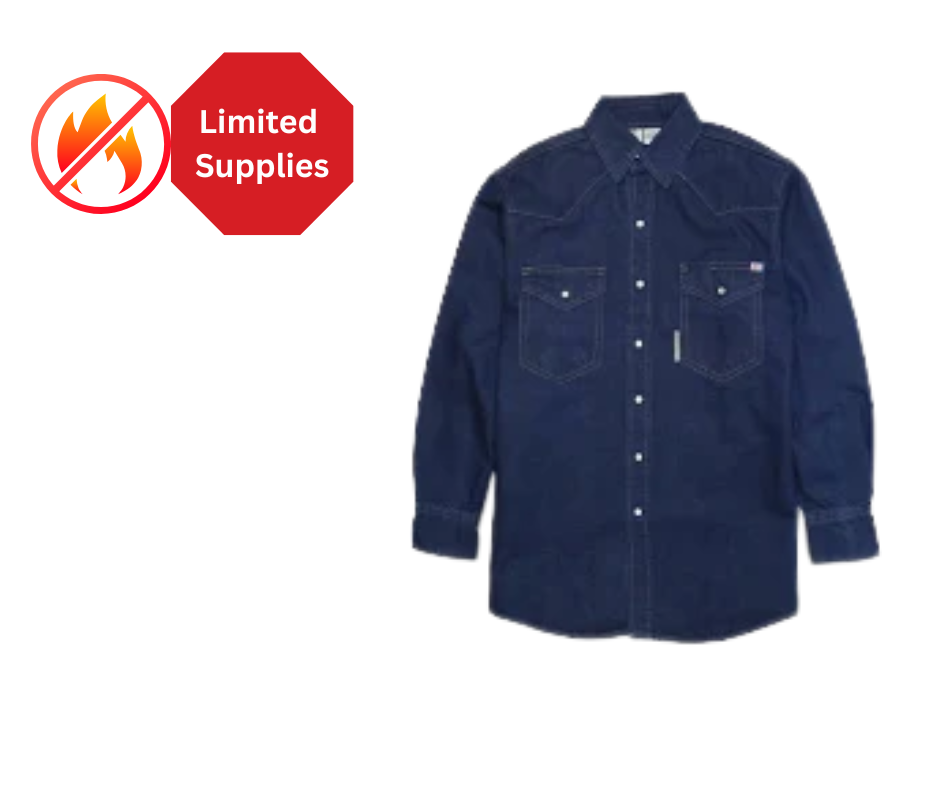 Details
Details*(FR) – Rasco Flame Resistant Denim Work Shirt
Original price was: $47.00.$41.00Current price is: $41.00. Buy Now -
Sale!
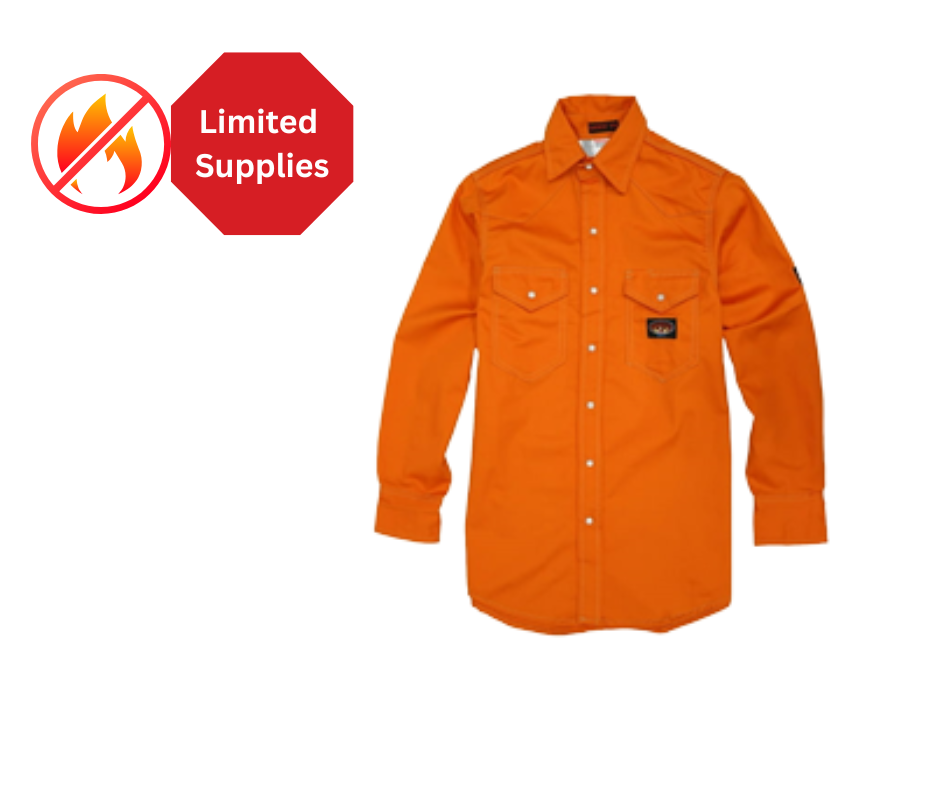 Details
Details*(FR) – Rasco Flame Resistant Orange Work Shirt
Original price was: $47.00.$41.00Current price is: $41.00. Buy Now -
Sale!
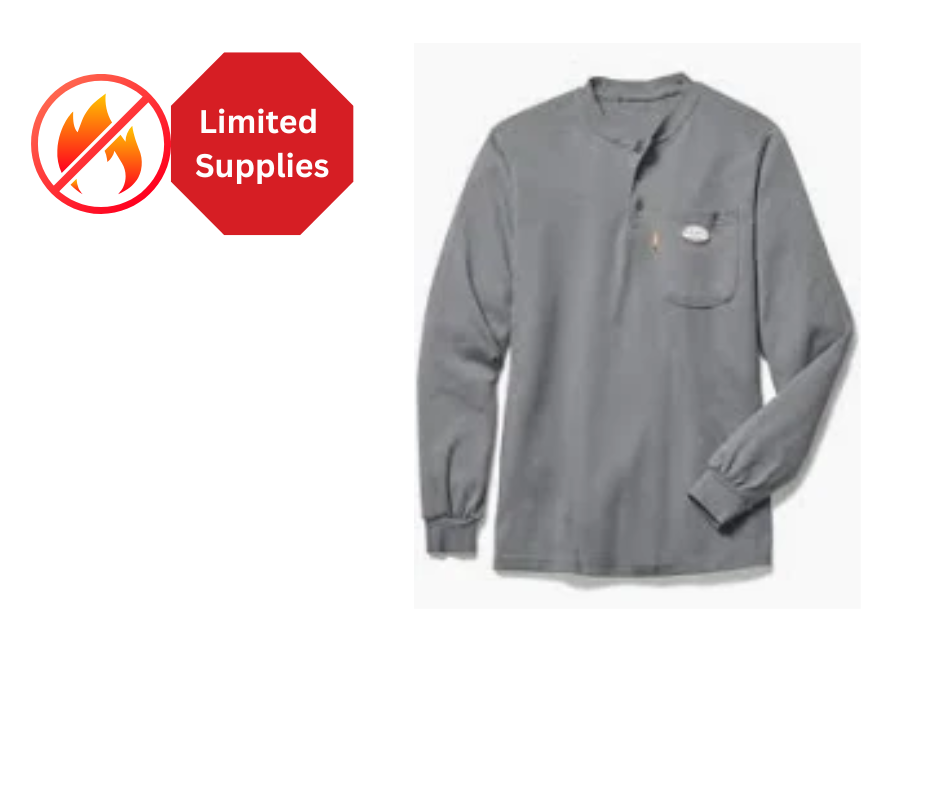 Details
Details*(FR) – Rasco Gray Long Sleeve Flame Resistant Long Sleeve Shirt
Original price was: $47.00.$41.00Current price is: $41.00. Buy Now -
Sale!
 Details
Details*(FR) – Rasco Gray Zip Up Hooded Sweatshirt Flame Resistant
Original price was: $74.00.$64.00Current price is: $64.00. Buy Now

Your Guide to Flame-Resistant Shirts
Keep Cool With D.E. Gemmill
The embers glow, the furnace roars, the arc flash ignites – in the face of flame, safety is paramount. flame-resistant shirts stand as a crucial line of defense, offering an additional layer of protection for individuals venturing into environments where flames and heat pose a significant threat.
This comprehensive guide delves into the world of flame-resistant shirts, exploring their history, functionalities, and how to choose the right one to shield yourself from fiery dangers.
The Evolution of Flame-Resistant Shirts
The quest for flame protection through clothing stretches back centuries. While the specific form of flame-resistant shirts, as we know them today, emerged in the 20th century, their development was built upon earlier advancements in flame-resistant textiles:
- Ancient Beginnings (400 BC – 18th Century): Early civilizations like the Egyptians and Greeks explored natural flame retardants like alum and borax to treat fabrics, offering a basic level of protection.
- Industrial Revolution and Beyond (18th – 19th Century): The rise of industrialization heightened the need for protective clothing, leading to advancements in flame retardant treatments using chemicals like ammonium phosphates and borax.
From Laboratory to Life: The Birth of Modern Flame-Resistant Shirts (20th Century)
The 20th century witnessed a significant leap in flame-resistant clothing technology:
- Early 20th Century: Scientists began exploring synthetic fibers inherently resistant to flames, paving the way for a new generation of protective apparel.
- The Rise of Nomex® and Kevlar®: The invention of these synthetic fibers in the 1960s and 1970s marked a turning point. Their exceptional flame resistance and durability revolutionized flame-resistant clothing, including shirts.
- Standardization and Regulations: The latter half of the 20th century saw the establishment of organizations like the National flame Protection Association (NFPA), setting standards and regulations for flame-resistant clothing in specific professions, ensuring consistent protection for high-risk workers.
Understanding Flame-Resistant Shirts
Beyond Terminology: flame safety often involves confusing terminology. Let’s differentiate flame-resistant shirts from their close cousins:
- Flame-Resistant: Inherently non-flammable, they resist ignition and self-extinguish when the flame source is removed, offering the highest level of protection.
- Flame-Retardant: Treated with chemicals to slow down burning and self-extinguish when the flame source is eliminated, but they can still ignite under sustained exposure.
- Flame-Repellent: Act as a barrier, repelling flames and liquids, delaying ignition, but can eventually burn under direct flame contact.
Materials and Construction: flame-resistant shirts are typically crafted from:
- Nomex® and Kevlar®: Known for their exceptional flame resistance and durability.
- Blends with inherent flame resistance: Combining synthetic and natural fibers like cotton for comfort and breathability.
Construction methods like flat seams and reinforced stitching enhance comfort and durability, while features like moisture-wicking fabrics and reflective elements improve functionality and safety.
Who Needs Flame-Resistant Shirts? (Applications and Benefits)
Individuals in various professions and activities benefit significantly from flame-resistant shirts:
- High-Risk Occupations: firefighters, welders, industrial workers in oil & gas refineries, chemical plants, and other hazardous environments.
- Arc Flash Protection: Electricians and personnel working near electrical equipment prone to arc flashes.
- Other Professions: Military personnel, racing drivers, construction workers facing potential flame hazards.
Benefits:
- Superior Protection from Burns: Delays ignition and self-extinguishes, minimizing the risk and severity of burns.
- Increased Safety and Confidence: Provides a psychological sense of security in high-risk situations.
- Compliance with Regulations: Meets industry standards and safety requirements for specific professions.
Choosing the Right Flame-Resistant Shirt
Selecting the appropriate shirt requires careful consideration of several factors:
- Level of flame Risk: Choose shirts with relevant certifications and ratings based on the anticipated hazards.
- Comfort and Mobility: Consider fabric weight, breathability, and range of motion for optimal performance.
- Durability and Care Requirements: Opt for high-quality materials and follow washing instructions to maintain flame-resistant properties.
- Additional Features: Look for functionalities like reflective elements, cargo pockets, and moisture-wicking properties, depending on your needs.
The Importance of Testing and Certification
The effectiveness of flame-resistant shirts is not solely based on the materials used. They undergo rigorous testing and certification processes to ensure they meet specific safety standards and provide adequate protection against flame hazards.
Purpose and Importance
- Ensures consistent performance: Testing helps guarantee that flame-resistant shirts offer the expected level of protection against flames and heat across various manufacturers and models.
- Provides user confidence: Knowing that a shirt meets relevant standards allows users to be confident in its ability to safeguard them in high-risk situations.
- Complies with regulations: Many industries have regulations mandating the use of certified flame-resistant clothing for specific tasks or occupations.
Types of Tests
- Flame resistance: This test evaluates the material’s ability to resist ignition and self-extinguish when the flame source is removed.
- Thermal conductivity: This test measures the rate at which heat transfers through the fabric, indicating how well the shirt insulates against thermal injuries.
- Tear strength: This test assesses the fabric’s resistance to tearing or ripping, which is crucial for durability and maintaining the integrity of the shirt in case of snags or abrasions.
Organizations and Standards
- National flame Protection Association (NFPA): NFPA develops and publishes various standards for flame safety, including standards for flame-resistant clothing used in specific occupations. These standards specify performance requirements and establish rating systems for different levels of flame protection.
- American Society for Testing and Materials (ASTM International): ASTM develops various technical standards, including some related to flame resistance of materials and clothing. These standards establish testing methods and performance criteria for flame-resistant materials.
Identifying Certifications
Look for labels or tags on the shirt that indicate compliance with relevant standards. These may mention organizations like NFPA and specific standards they meet (e.g., NFPA 70E). Understanding these certifications can help you choose a shirt that offers the necessary level of protection for your needs.
Features and Functionalities of Flame-Resistant Shirts
flame-resistant shirts come in various styles and feature functionalities designed to enhance both safety and comfort:
Styles and Closures
- Button-up: Offers a traditional look and adjustable fit, often preferred for professional settings.
- Pullover: Easier to put on and remove, suitable for situations requiring quick response times.
- Mandarin collar: Provides comfort and a close fit, often used in conjunction with other protective gear.
Specific Features
- Comfort collars: Designed to minimize irritation and chafing around the neck.
- Reinforced elbows: Offer additional protection and durability in areas prone to wear and tear.
- Hidden pockets: Securely store essential tools or equipment without compromising the clean look of the shirt.
- Flame-retardant reflective tape: Enhances visibility in low-light conditions, crucial for firefighters and other personnel working in hazardous environments.
Washing and Dry Cleaning Tips
Maintaining the flame-resistant properties of your shirt through proper washing and drying is crucial for its effectiveness. Always follow the manufacturer’s care instructions on the garment label:
General Tips
- Turn the shirt inside out before washing.
- Use warm or cold water, not hot, as hot water can damage the flame-resistant properties.
- Use mild detergent and avoid harsh chemicals, bleach, or fabric softeners.
- Line dry or tumble dry on low heat. Do not dry clean unless explicitly stated by the manufacturer.
- Store the shirt in a cool, dry place away from direct sunlight and heat sources.
Additional Considerations
- Frequency of washing: Wash your flame-resistant shirt after each use or following heavy sweating to maintain breathability and hygiene.
- Heavy stains: Consult a professional cleaning service for heavily soiled garments.
- Inspection: Regularly inspect your shirt for signs of wear and tear, such as rips, tears, or loss of flame-resistant properties. Replace the shirt if damaged or if the flame-resistant effectiveness diminishes.
By following these washing and dry cleaning tips, you can ensure your flame-resistant shirt remains functional and provides optimal protection throughout its lifespan.
The Environmental Impact of Flame-Resistant Shirts: Balancing Safety with Sustainability
While flame-resistant shirts play a crucial role in safeguarding individuals in various professions and activities, their production and use can have environmental impacts that require consideration. This section delves into the key aspects of this complex issue.
Environmental Concerns
- Material sourcing: Some flame-resistant materials, particularly those derived from synthetic fibers like Nomex® and Kevlar®, rely on non-renewable resources like petroleum during production.
- Chemical usage: Manufacturing processes may involve the use of harsh chemicals, potentially leading to air and water pollution if not properly managed.
- Energy consumption: Production processes can be energy-intensive, contributing to greenhouse gas emissions and impacting the environment.
- End-of-life management: Discarded flame-resistant clothing, if not disposed of responsibly, can end up in landfills, contributing to waste accumulation and potentially releasing harmful chemicals into the environment.
Sustainable Solutions
- Material innovation: Ongoing research and development are focused on creating flame-resistant materials from more sustainable sources, such as recycled materials or bio-based alternatives.
- Improved manufacturing processes: Optimizing production methods to minimize energy consumption, reduce reliance on harmful chemicals, and implement cleaner technologies can significantly reduce the environmental footprint.
- Extended product life: Proper care and maintenance of flame-resistant shirts can extend their lifespan, reducing the need for frequent replacements and associated environmental impact.
- Responsible end-of-life management: Implementing recycling programs or repurposing flame-resistant clothing at the end of its usable life can divert waste from landfills and promote circularity.
The Balancing Act
Choosing flame-resistant clothing involves acknowledging the environmental impact while prioritizing safety in high-risk situations. Here’s how to navigate this balance:
- Assess the risk: Evaluate the specific level of flame risk involved in your activity or profession.
- Explore alternatives: Consider if alternative non-flame-resistant clothing with proper safety precautions might be suitable for lower-risk situations.
- Choose reputable brands: Look for manufacturers committed to sustainable practices and transparency regarding the environmental impact of their products.
- Prioritize responsible use and care: Extend the lifespan of your flame-resistant shirt through proper washing, drying, and storage.
- Support sustainable solutions: Advocate for and support initiatives promoting sustainable materials, cleaner production methods, and responsible end-of-life management practices in the flame-resistant clothing industry.
By adopting a holistic approach that considers both safety and environmental responsibility, individuals and organizations can contribute to a more sustainable future while prioritizing the well-being of those who rely on flame-resistant clothing for protection.
Conclusion
flame-resistant shirts act as a vital shield, safeguarding individuals from the dangers of flames and heat in various environments. Understanding their history, functionalities, and how to choose the right one empowers you to make informed decisions and prioritize your safety. Remember, flame safety is paramount, and taking necessary precautions, including wearing appropriate flame-resistant clothing, can significantly reduce the risk of burns and injuries in high-risk situations.
To explore a wide range of flame-resistant clothing options, consult with the safety professionals at D.E. Gemmill to find all the flame-resistant clothing you need — from flame-resistant shirts to flame-resistant pants.
Why Buy FR Shirts From D.E. Gemmill Inc.?
We remain exclusively committed to safety apparel and traffic control products. We specialize in these items and know them better than any catalog retailer. As a result, we can offer expert advice based on our more than 30 years of expertise.
We also offer a flexible return policy as well as reliable shipping to anywhere in the country. Whether you shop online or visit our showroom, we are your source for FR shirts, pants and everything else you need to stay safe on the job.
Browse our entire collection of flame-resistant shirts and place your order online today. You can also call us at 717-755-9794 (corporate office) or 717-747-1391 (retail store) to speak to a knowledgeable staff member, or contact us online for additional information.